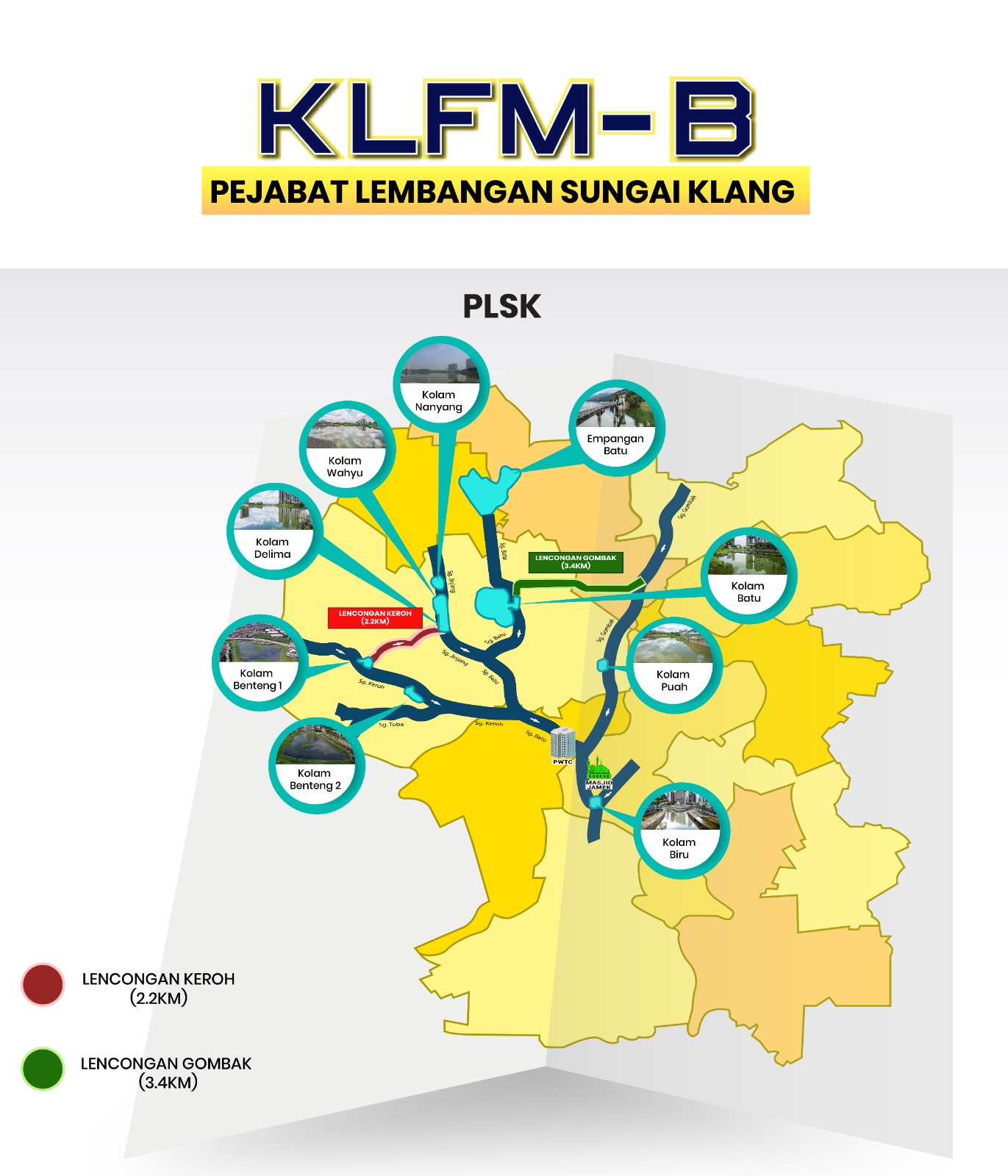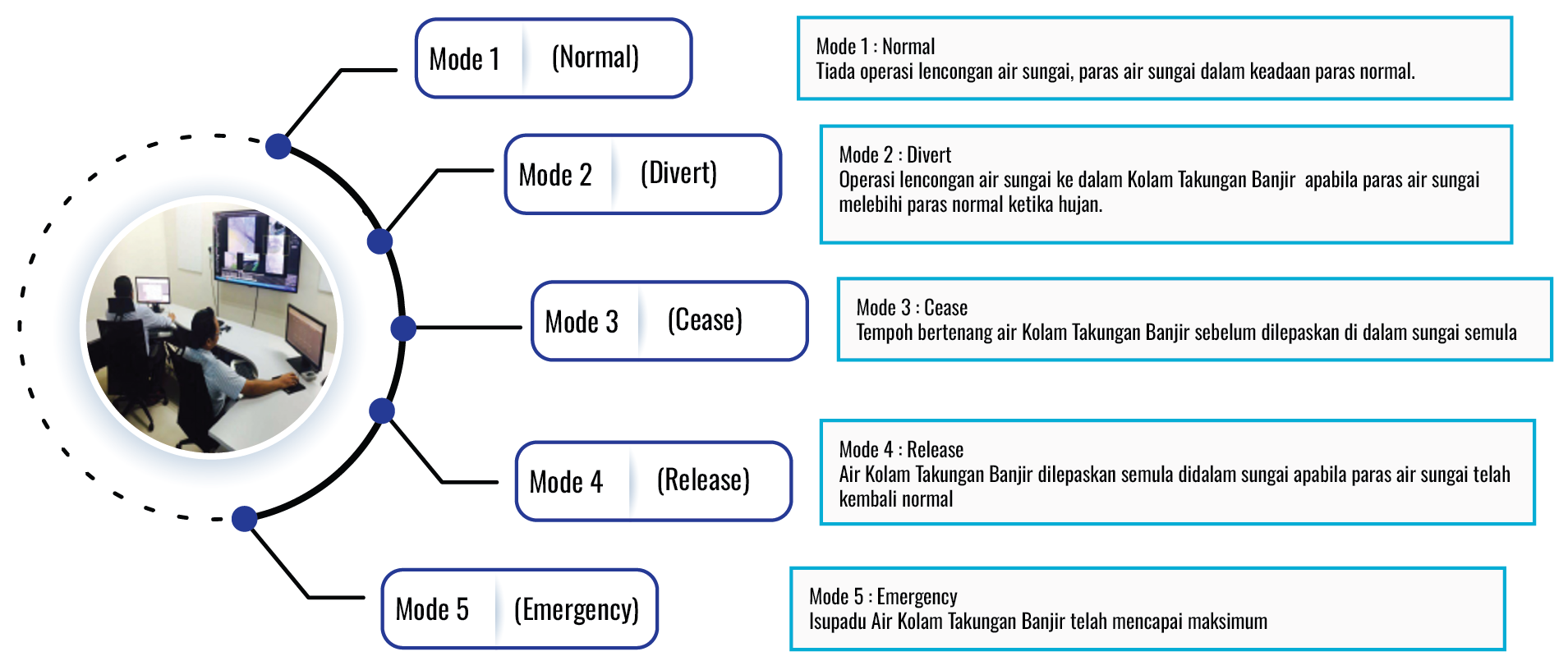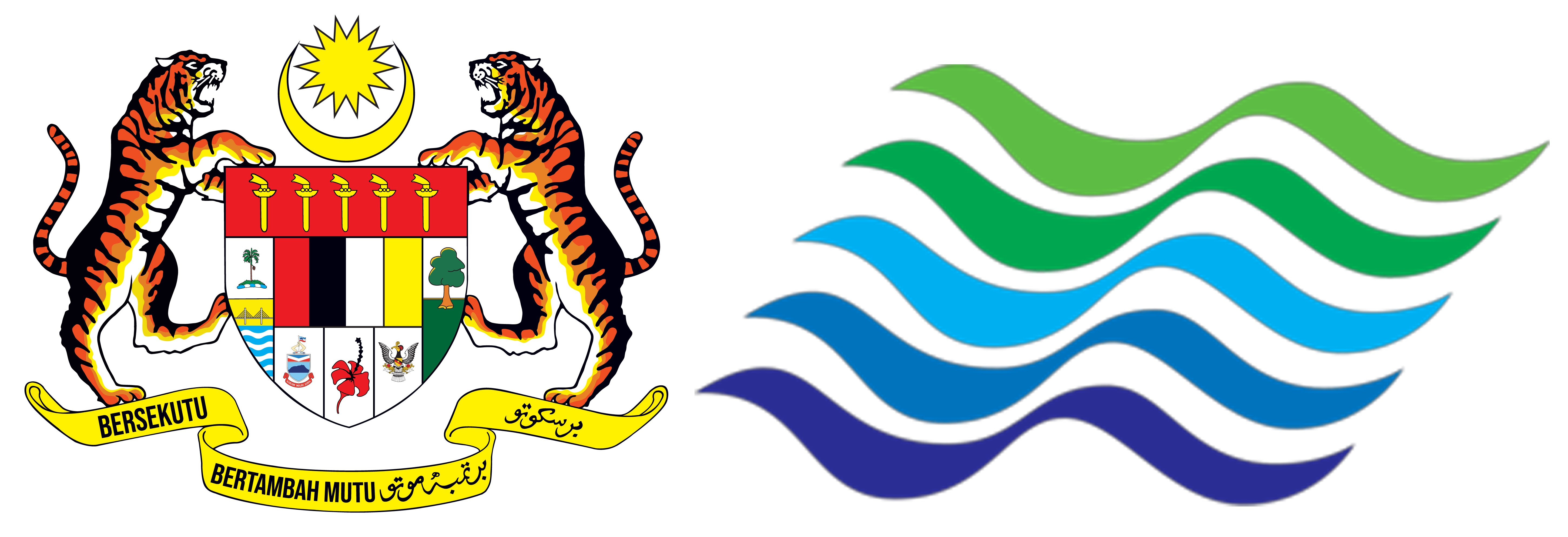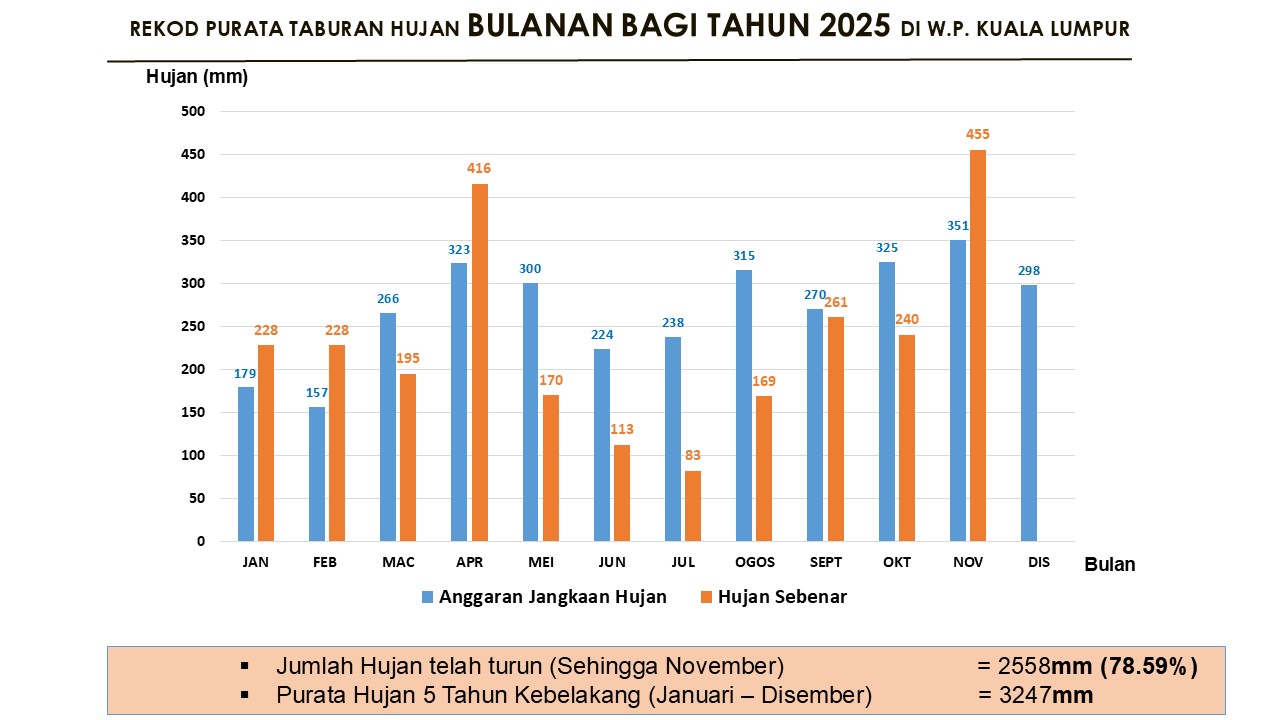
The main function of the KLFM is to divert excess water from two (2) rivers namely the Gombak River through the Gombak Diversion and the Keroh River through the Keroh Diversion when there is heavy rain in the Gombak and Keroh catchment areas. This diversion is designed based on 100-ARI ('Average Recurrence Interval') flood events.
It is estimated that a total of 275m3/s excess water flow rate during peak flood time from Sungai Gombak will be diverted through the Gombak Diversion for a distance of 3.375km to the 'regulating pond' and a total of 150m3/s excess water flow rate from Sungai Batu will also flow directly to the 'regulating pond' before entering the Rock Reservoir Pool. Kapasti Batu Reservoir is capable of holding water from flowing directly to Kuala Lumpur City Center for a total of 4.5 MCM ('million cubic meters').
The Jinjang Reservoir also receives excess water from two (2) river sources, namely water diverted from the Keroh River through the Keroh Diversion for a total of 100m3/s for a distance of 2.2km and water from the Jinjang River that flows by gravity estimated at a total of 80m3/s. Kapasti Jinjang Reservoir which originally consisted of Nanyang Reservoir, Wahyu Reservoir and Delima Reservoir, is able to hold water from flowing directly to Kuala Lumpur City Center totaling 2.5MCM ('million cubic meters').
This KLFM project successfully achieved the target of reducing excess water at peak flood times from 600m3/s to 400m3/s from continuing to flow to Kuala Lumpur City Center to prevent flooding. However, it should be remembered that the existing capacity of Kuala Lumpur City Center to receive excess water is a total of 350MCM, which is still a surplus of 50MCM. This situation makes the operation of KLFM critical. Therefore, PLSK is responsible for carefully planning a scheduled and systematic maintenance system to ensure that all the control structures involved are in working condition as designed and always ready.
In relation to that, a sufficient management allocation specifically for the operation and maintenance of KLFM is very necessary to ensure that the original objective of the KLFM project to deal with flooding in Kuala Lumpur City Center by 70 percent can be done perfectly. This appropriation requirement includes the cost to cover security control services, management and administration including bills and utilities, silt management and cleaning of areas along river reserves, reservoirs and diversion areas, structural maintenance works and mechanical and electrical components as well as regulatory systems and equipment. automatic flood detection and remote control including spare parts supply requirements and compliance with the Occupational Safety and Health Act 1994, Regulations thereunder and Code of Practice.







